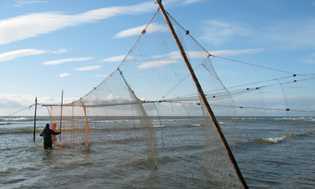 ASFB sent the following letter to the Times in response to an article relating to salmon netting published on 29 July 2013 (subscription required)
ASFB sent the following letter to the Times in response to an article relating to salmon netting published on 29 July 2013 (subscription required)
Your report (“Supplier warns of threat to wild salmon”, July 29), in which fly fishing is blamed for “slowly but surely” killing off already declining stocks appears to conflate a number of issues. Whilst Mr Puller is undoubtedly correct that the closure of commercial netting companies will reduce the supply of wild salmon to the market (it is illegal to sell rod-caught salmon in the UK), this does not equate to a threat to wild salmon. Indeed, Marine Scotland Science make clear that reductions in the Scottish netting industry since the 1970s (largely due to netting stations being bought out for reasons of conservation) have allowed a greater proportion of fish to enter rivers resulting in an increase in the numbers of fish available to the rod fisheries and crucially, escaping to spawn.
In 2011, anglers in Scotland released 73% of all fish caught and 91% of the fragile spring stock were released. This was largely achieved through voluntary means and these figures represent the highest levels of catch and release of any signatory to the North Atlantic Salmon Conservation Organisation. It is incorrect for Keith Allen, secretary of the Salmon Net Fishing Association of Scotland to suggest that landowners who allow fishing by rod and line ‘do not care about conservation, just money’.
It is also worth noting that whilst exploitation by rods and nets is relatively evenly split between the two fishing methods, the management of these fisheries is almost entirely funded by fishery proprietors in the rod fishery. In 2012 commercial net fisheries contributed less than 2% of the total revenue raised by District Salmon Fishery Boards – money used for habitat improvements, science and protection of the fish from in-river and coastal poaching, to the benefit of all salmon fisheries.
The declines in Atlantic salmon are multi-factorial and the current consensus is that the majority of these declines occur during the marine phase of the life-cycle. It is overly simplistic to blame either rod or net fisheries for all of this decline, but it is clear that exploitation of fish must be carefully considered by managers on a catchment by catchment basis. However, coastal netting stations take fish from a number of different rivers, and therefore, in contrast to most rod fisheries, it is extremely difficult to assess the impact that coastal net fisheries have on individual river stocks.
